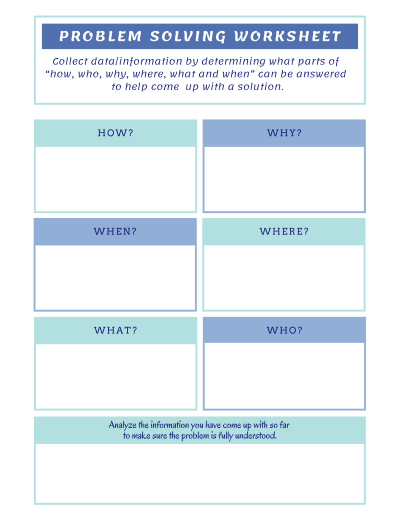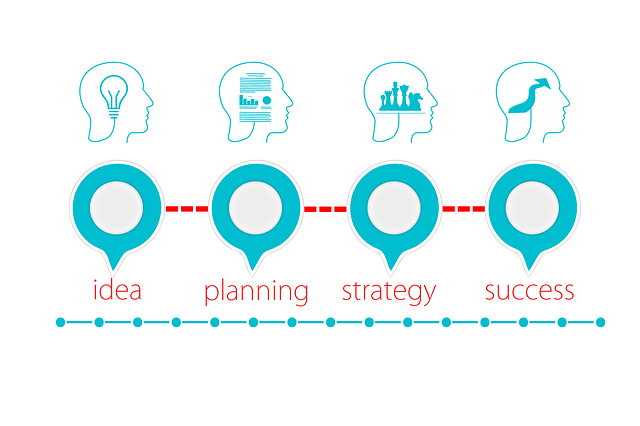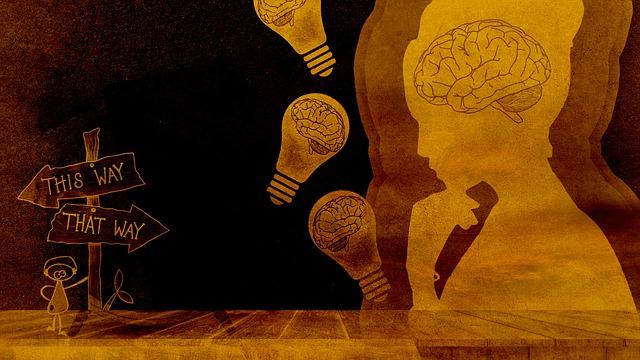Effective problem solving can make a big difference in someone’s life. Generally, we all come across problems in all aspects of our lives.
By early adulthood, we should have developed decent problem-solving skills, but many do not.
Problem solving takes what is known as critical thinking. This is a skill that is very good for everyone to learn. If you further your education past high school, you will be expected to use and hone your critical thinking skills to problem solve.
These are skills that can be used in many situations that come up in life such as: careers, opportunities and challenges that come along.
You would use this thinking for an everyday situation like figuring out a budget that you can live within.
By learning problem solving skills you become more effective and efficient at taking care of problems as they arise.
And the more these steps are put into practice, and you continue to develop this skill you will reach a point of going through the steps without realizing it. You will just do it.
Why It’s Important to Learn Problem Solving Skills
Problems happen in life—that’s just the way it is. Ever know someone that didn’t seem to be able to make decisions about anything, let alone a problem. There’s a good chance that person never learned problem-solving.
This is a skill that you will use throughout your life, both in your personal life and also with your job. No matter what you do or how you live, problems are guaranteed to happen.
With good problem-solving skills under your belt, it will help to get through those times. Let’s see what the steps are for good problem solving.
Step 1: Identify
To help identify the problem you are working on, start out by:
*Thinking about how things would be if they were the way you want them to be at this specific time. This gives you a standard to start with and to measure against.
*Next question is: How far from this version is acceptable?

Step 2: Describe The Problem
Can you describe the problem in a sentence or two? Being able to do this helps you see clarity for the situation and what the issue is.
If anyone else is involved in the said problem, this is the time to share with them to make sure everyone is on the same page with what the exact problem is.
When more than one person is involved, no one can be working toward a solution to reach an agreed upon goal if you can’t agree on the problem, in the first place.
The reason for this step is because when a problem presents and involves more than one person, you need to get all perspectives. Going with your perspective only may not be the accurate perspective of the problem or not complete.
There may be alternative perspectives that may be more accurate and need to be taken into consideration.
A problem needs to be looked at from all angles so that all options for a solution can be considered.
Then ask some “what” questions and discuss the responses from everyone involved. This should cause everyone to understand, conclude and agree on what the problem is.
Step 3: Analyze The Problem
Determine how urgent is the problem? There are generally three phases of a problem.
*Beginning–it’s just starting to come about, but doesn’t immediately cause any type of threat or need immediate attention.
*Mature phase—the problem has shown signs of causing minor damage and may be escalating to where the problem needs to be addressed before it becomes a major problem with deeper, greater or more expensive challenges.
*Crisis phase– happens when the problem gets so serious that it must be taken care of immediately. In this phase, real damage can be done and potentially cause long term damage.

Step 4: Determine the Cause Of The Problem
More questions to ask yourself…
*What is the root cause of the problem?
*Who is responsible?
*When did the challenge first emerge?
*Why do you think it happened?
*Where is it going to hurt the most?
*And the most important question to ask here is: Can the problem be solved so it will never happen again.
Part of the reason we need problem-solving skills is for long term benefits.
What and why are very important questions. “What” helps describe what is going on that needs a solution, but “why” forces us to really consider the reasons behind the problem.
Truthfully, we’ve been hearing this since grade school. Remember the “who”, “what”, “where”, “when” and “how” that we were taught in elementary school.
Bet you didn’t realize these words would also come into play when problem solving.
Step 5: Cultivate Additional Solutions To Adopt, If Needed
Now it’s time to start coming up with solutions. I say more than one because the first solution you come up with may not be doable or the best solution.
When you come up with more than one solution, you then have the option of choices. Two to three solutions are a good goal to shoot for.
Look at each choice you came up with separately to access them and decide on which solutions is the best long-term solution. Rank your choices based on efficiency, long-term value, cost and what resources you already have to commit to the solution.
Maybe the most important ranking is if you can stick to the solution.
Step 6: Apply and Execute the Solutions
In order to execute the solution, you may have to come up with a plan. For instance, I recently had major work done in my mouth which turned out to be rather expensive. And I’m not finished yet.
At the time of this writing, I haven’t yet figured out how I’m going to pay for the work done. But I will have to make time shortly to sit down with pen, paper, calculator and expenses in hand to do some serious re-arranging of our budget.
I will come up with a few ways to pay for the dental work so that I have back-up solutions if the first doesn’t work.
You also may have to do the same type of thing. Come up with solutions, make a plan, execute that plan with back-up plans handy and ready.
Remember that all parties involved in the problem or affected by it, should know about the solution, plan and execution of said plan.
And all parties should be in agreement, so that everyone is working toward the same goal.

Step 7: Measure the Outcome
Part of your plan should include how you are going to determine if the chosen solution worked.
If you don’t, you won’t really know if the solution did or is doing what you intended or if the solution was good or not.
I’ve made a question checklist that you can download and print out to use. The checklist is in the middle of the page.
I find that when I have a specific set of questions, written down, it helps me focus on what I’m trying to determine when I’m hit with a big problem that I need to solve.
Give it a try, it can become a powerful tool for you.
Final Thoughts
These steps and approach to solving problems can be used in all aspects of your life, including work. Using this process could be very good to use for solving work challenges.
If you aren’t comfortable using these techniques at work, then practice in other areas of your life until you don’t even have to think about the steps.
You just automatically start working the steps without thinking about it.
Till Later,
Cher
Relevant Reading
Skills for Teens To Master Before Adulthood
How Stress Affects Women










